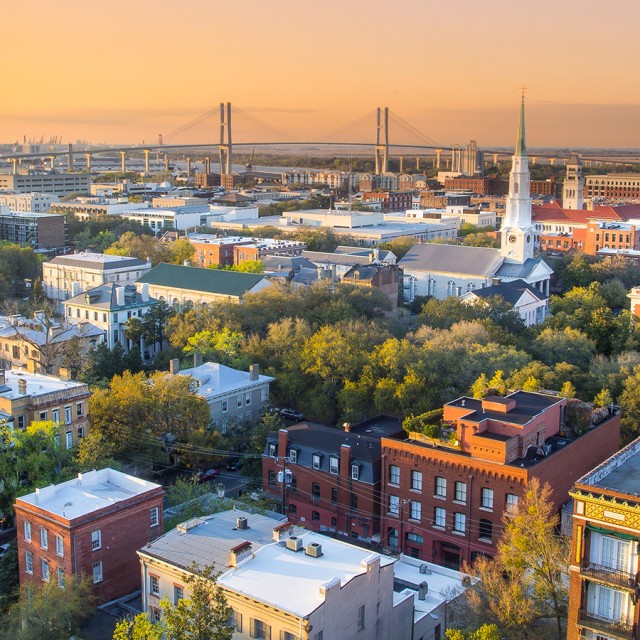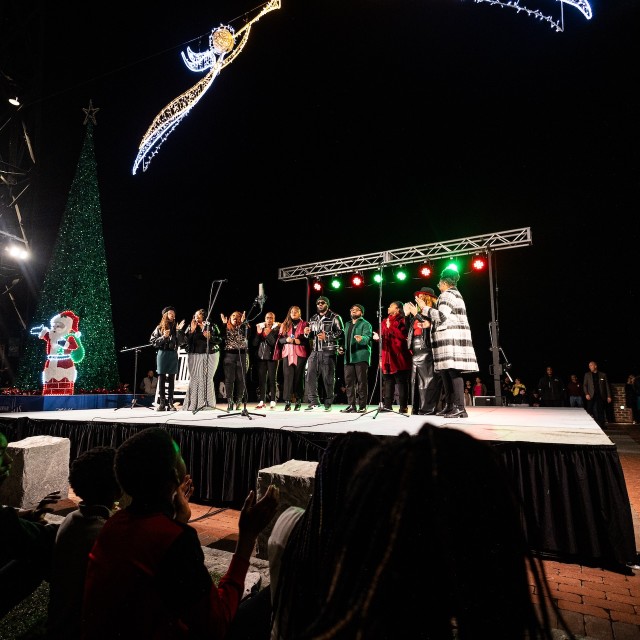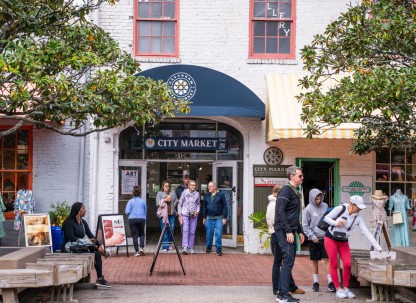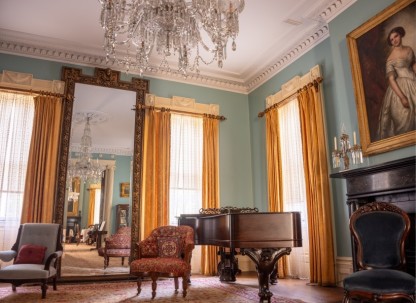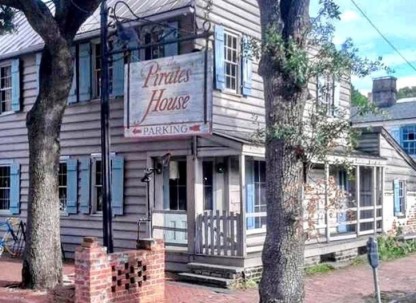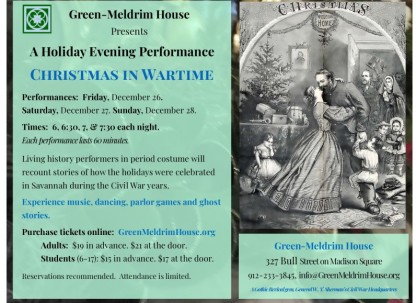History of Savannah

Courtesy of Hargrett Rare Book and Manuscript Library, University of Georgia Libraries
Savannah's recorded history begins in 1733. That's the year General James Oglethorpe and the 120 passengers of the good ship "Anne" landed on a bluff high along the Savannah River in February. Oglethorpe named the 13th and final American colony "Georgia" after England's King George II. Savannah became its first city.
Colonial Period in Savannah
The plan was to offer a new start for England's working poor and to strengthen the colonies by increasing trade. The colony of Georgia was also chartered as a buffer zone for South Carolina, protecting it from the advance of the Spanish in Florida.
Under the original charter, individuals were free to worship as they pleased and rum, lawyers and slavery were forbidden - for a time.
Upon settling, Oglethorpe became friends with the local Yamacraw Indian chief, Tomochichi. Oglethorpe and Tomochichi pledged mutual goodwill and the Yamacraw chief granted the new arrivals permission to settle Savannah on the bluff. As a result, the town flourished without warfare and accompanying hardship that burdened many of America's early colonies.
Savannah is known as America's first planned city. Oglethorpe laid the city out in a series of grids that allowed for wide open streets intertwined with shady public squares and parks that served as town meeting places and centers of business. Savannah had 24 original squares; 22 squares are still in existence today.
Revolutionary War and Antebellum Period
During the American Revolution, the British took Savannah in 1778 and held it into 1782. A land-sea force of French and Americans tried to retake the city in 1779, first by siege and then by direct assault, but failed.
After independence was secured, Savannah flourished. Soon, farmers discovered that the soil was rich and the climate favorable for cultivation of cotton and rice. Plantations and slavery became highly profitable systems for whites in the neighboring "Lowcountry" of South Carolina. So Georgia, the free colony, legalized slavery. The trans-Atlantic slave trade brought many African-Americans through the port of Savannah. Many who stayed in the area formed the unique Gullah culture of the coastal communities in Georgia and South Carolina.

Savannah Cotton Exchange
With the wealth brought by cotton, residents built lavish homes and churches throughout the city. After the invention of the cotton gin on a plantation outside of Savannah, the city rivaled Charleston as a commercial port. Many of the world's cotton prices were set on the steps of the Savannah Cotton Exchange. The building is still in existence.
But Savannah was not spared from misfortune. Two devastating fires in 1796 and 1820 each left half of Savannah in ashes but residents re-built. The year 1820 saw an outbreak of yellow fever that killed a tenth of its population. Savannah also survived fires, epidemics and hurricanes but always bounced back.
Civil War
Pre-Civil War Savannah was praised as the most picturesque and serene city in America. It was known for its grand oaks festooned with Spanish moss and its genteel citizenry. The Georgia Historical Society was founded in that era. Magnificent Forsyth Park acquired its ornate fountain, a sight worth seeing.
During the Civil War, the city suffered from sea blockades so strict that the economy crumbled. "Impregnable" Fort Pulaski at the mouth of the Savannah River was captured by Union soldiers in 1862. The city itself did not fall until Union General William Tecumseh Sherman entered in mid-December after burning the city of Atlanta and everything else in his path on his "March to the Sea." Upon entering Savannah, Sherman was said to be so impressed by its beauty that he could not destroy it. On December 22, 1864, he sent a famous telegram to President Abraham Lincoln, offering the city as a Christmas present.
Promoted Content
Reconstruction and the Turn of the Century
After the end of the Civil War, the Reconstruction period began in Savannah. Food was scarce and the economy was in ruins. Despite these hardships and the added burdens of prejudice, the freed slaves who remained in Savannah built a thriving community, with its own churches, schools and economic strength. Savannah became one of the most historically significant African-American cities in the nation.
At the turn of the 20th century, cotton was king again. Savannah thrived, as did her new industries, including the export of resin and lumber. Then the boll weevils came, destroying most of the cotton and the state's economy—about the same time that the Great Depression began.
Savannah's Renaissance
It wasn't until the post-war years that Savannah bounced back again, not just economically but also culturally and aesthetically. A group of women banded together in the 1950s to preserve historic structures threatened by the wrecking ball. Their brave endeavors began the Historic Savannah Foundation, which is credited with saving the beautiful architecture that was the foundation of Savannah's charm.
Savannah's Historic District was designated a National Historic Landmark in 1966. It is one of the largest historic landmarks in the country.
Significant buildings that were saved and restored include:
- The Pirates' House (1734), an inn mentioned in Robert Louis Stevenson's book "Treasure Island," and the oldest structure in Georgia
- The Olde Pink House (1789), site of Georgia's first bank
- The birthplace of Juliette Gordon Low (completed in 1821), now owned and operated by the Girl Scouts of the U.S.A. as a memorial to their founder
- The Telfair Academy of Arts and Sciences, built in 1812 as a mansion, was one of the South's first public museums
- The Lutheran Church of the Ascension (1741)
- The Independent Presbyterian Church (1890)
- The Cathedral of St. John the Baptist (1876), one of the largest Roman Catholic churches in the South
- The First African Baptist Church was established in 1788.
- Savannah's Temple Mickeve Israel is the third oldest synagogue in America.
Modern Savannah
In the last 10 years more than 50 million people came to visit Savannah, drawn by its elegant architecture, ornate ironwork, fountains and green squares. Savannah's beauty is rivaled only by the city's reputation for hospitality. It has become one of the country's most popular vacation spots. Visting for the first time? Check out our must-dos for first-time visitors.


